Everything you need to know about bird cherry
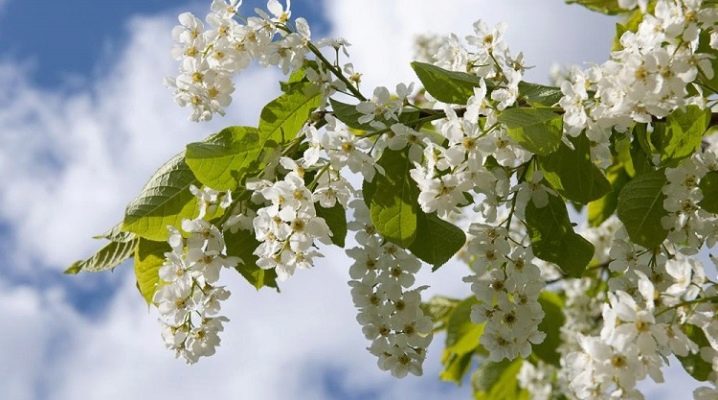
Having found out everything there is to know about bird cherry, including its botanical description, gardeners can safely take on the cultivation of this plant. It will be necessary to take into account the features of the bird cherry (black) and other species and varieties, take into account how the tree looks and how it blooms. It is equally important to find out when the bird cherry ripens, and what are its leaves and fruits.
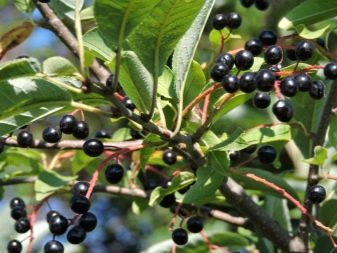
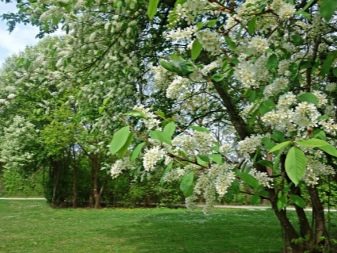
general description
The classic bird cherry is a tree. However, in some cases, its life form is still a bush. Previously, there was a special subgenus of bird cherry, but gradually the opinions of botanists diverged. The prevailing position is that it is just a view. Others attribute it to the subgenus cherry, but this opinion is rare.
Since bird cherry from a botanical point of view belongs to the pink family, or rather, to the genus plum, then its "relatives" can be considered:
- cherries;
- peaches;
- apricots;
- cherries;
- almond;
- cinquefoil;
- bladderworm;
- rose hip;
- meadowsweet;
- mountain ash;
- spirea.
Bird cherry grows in various regions of Europe and Asia. It is also found practically throughout Russia.
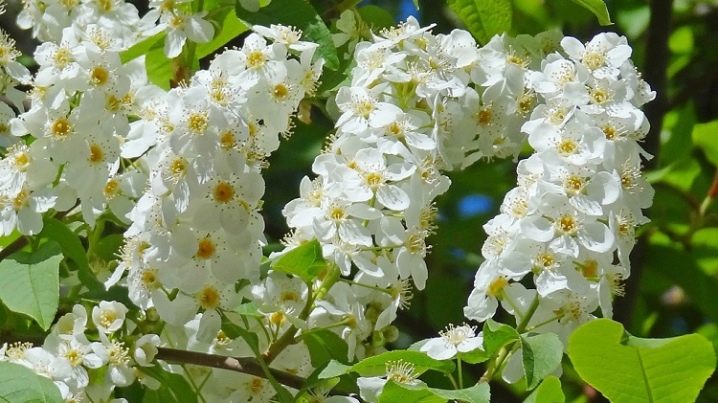
In the east, the habitat of this species reaches the Sea of Okhotsk itself. Since it looks very attractive, it can be considered one of the best ornamental plants.... The total height is from 0.6 to 10 m. The elongated crown of the bird cherry is usually very dense. Olive branches are characteristic at a young age, although sometimes they are dark red in color. The plant blooms with the formation of white, occasionally pinkish flowers. They are grouped into long brushes. The formation of simple alternate leaves, similar to an ovoid lancet or an elongated ellipse, is characteristic.
These leaves are bare and rather thin. The length can reach 15 cm, although in general it does not exceed 10 cm. The petioles are rather short. The appearance of styloid stipules is typical. The shape of the leaf is pointed, the sharp-serrated appearance of the leaf edge is noted. Bird cherry fruits are spherical black drupes. Their cross-section ranges from 0.8 to 1 cm. The flesh of such a berry is sweet and has a strong astringent effect. When ripe, it has a green color. Upon contact with air, this pulp becomes dark purple in color.
The bird cherry inflorescence is most noticeable in May, after the foliage has opened. The flowers of this plant give off a strong, attractive scent. Double flowers are found much more often than the variegated form. The harvest ripens in August and September, depending on varietal characteristics and weather conditions. Thanks to a highly developed root system, bird cherry can survive the dry season without problems.
Other features of this plant:
- trunk section is usually up to 40 cm;
- significant content of phytoncides;
- high bark density;
- a small bone inside each berry.

Spreading
Bird cherry has a very diverse habitat. You can meet her:
- in the east of Siberia;
- in the Far East;
- in East Asia;
- in Asia Minor;
- in the Caucasus and Central Asia;
- in several areas of North America;
- in the Iberian Peninsula and in other parts of southern Europe.

Types and varieties
Bird cherry common, she is bird cherry or black, gives tart tasty fruits. This is a decent honey plant. Some of the healing properties of such a culture are noted. The fissured bark is brown in color. Other features:
- leaves with a short petiole;
- strong-smelling white flowers with a section of 1-1.5 cm;
- flowering in April and May;
- ripening of fruits from August to September;
- a specific bitter smell from all parts of the plant.
Virginia bird cherry is visually similar to ordinary bird cherry, however, flowering and fruiting occurs about 2 weeks later. The height can reach 10 m, and the width is up to 8 m. The elliptical shape of the leaves is characteristic, reaching a length of 10 cm and having a specific shine. The small rounded fruits of the Virginia bird cherry are edible. They are quite tasty, they can have a wide variety of colors from dark red to black.
Magaleb bird cherry comes from Europe. In many cases, this is a multi-stemmed tree. It is worth noting that in England it is often called the Saint Lucie cherry. Rounded, shiny leaves can be up to 6 cm in length. Flowering and fruiting begins at the age of 3-4 years. Decent winter hardiness is noted (up to -27 degrees).
Of the plant species in the garden, you can also see:
- pennsylvanian bird cherry;
- bird cherry Maak;
- late bird cherry;
- siori type.
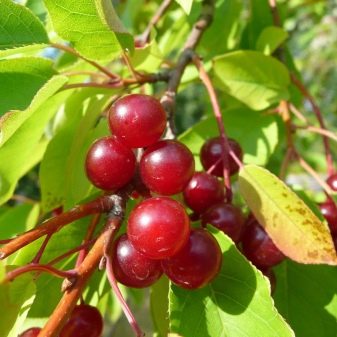

The Siberian Beauty variety is listed in the State Register of Agricultural Crops. This is a medium-late ripening plant. It grows rapidly and reaches great heights. The moderately dense crown looks like a pyramid. Branches leave the trunk almost at right angles.
The flowering itself is of moderate intensity. The average fruit weight is 0.6 grams. These rounded berries are black by default. Decent resistance to pests and diseases is noted. Basically, this is rather a decorative culture.
Since 2009, the variety has also appeared in the Russian register Purple candle... It is also a medium late crop with a high growth rate and a not too dense crown. The kidneys are like a pointed egg. Other features:
- medium-sized oval foliage;
- flower stalks in the form of a cylinder;
- the average weight of berries is 0.62 grams;
- poorly expressed periodicity of fruiting.
If it is decided to breed bird cherry maaka, then you should pay attention to the Amber Beauty variety. Its orange-copper bark looks very nice. The height of such a tree reaches 15 m. The change in the color of the leaf plates during the season complements the impression. Resistance to low temperatures is noted - Amber Beauty will be able to survive the cold up to -40 degrees. It is recommended to grow this plant in fertile areas with an abundance of sunlight.
Among the Virginia bird cherry, the Schubert variety attracts attention. Its broad crown and purple foliage are attractive. Excellent resistance to common bird cherry pests is also noted. Variety Canada red grows to a maximum of 5 m. That is why it is very often used in small dachas and in other local plantings.


Landing
Gardeners can plant bird cherry bushes in the open field in both spring and autumn, depending on their preferences. The choice of the most fertile land, rich in nutrients, is recommended. The soil should be neutral, sometimes with a slight shift to the acidic zone. In terms of composition, loam is best, but sandy loam will also show itself relatively well. Avoid areas where groundwater comes close to the surface. When asked whether it is possible to plant bird cherry near the house or not, any agronomist will answer in the affirmative.
For autumn planting, it is best to focus on the middle of the season. At this point, the soil is usually saturated with water to the maximum. A small mound is formed in the pit, where the seedling is introduced. Sawdust and loose soil are poured into the base of the pit.
It is not recommended to overly saturate the hole with organic matter, even in spring - this leads to thinning of the branches.
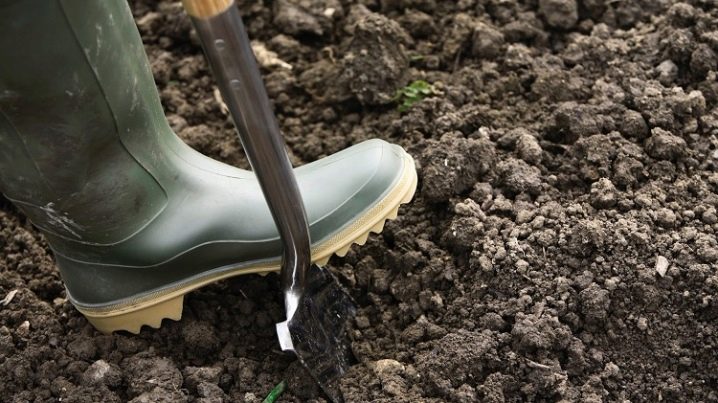
Care
- Watering and loosening. Bird cherry bushes are very fond of active irrigation. They just need that kind of support. Mature plants, however, are watered only as needed. This should be done more frequently during dry seasons.By loosening the watered soil, the crust is removed and weeds are removed. It is useful to resort to this practice even after precipitation has fallen.
- Top dressing... Growing bird cherry means the need to fertilize it as the soil depletes. If the plant retains its tone, it means that there are enough nutrients for it. In any case, prophylactic fertilizing with mineral complexes is very useful. In the spring months, saltpeter or urea is used. Closer to winter, superphosphate is laid, and all fertilizers are applied at the root.
- Transfer... If possible, it is advisable to transplant the bird cherry to another place in early spring. Landmark - as soon as the snow melts. At the same time, it is important to prepare for work in the fall. So that the lump of soil does not melt too quickly, it is covered with the remaining snow. The bird cherry must be dug in order to preserve its roots as fully as possible. Protection of the earthen coma is also provided by covering with burlap. The transplanted plant is fixed on wire ties to thoroughly boarded up stakes. After transplantation, bird cherry must be covered with soil. Manure is poured onto it. For some time, the plant must be shaded.
- Pruning... This moment is very important when trying to grow various varieties of bird cherry from a stone at home. In most cases, the plant is pruned in the fall. The procedure is carried out regularly. It is necessary to start it in early November, when the leaf fall ends. Broken and deformed branches should be disposed of regularly. All sections are coated with garden varnish for greater safety. The crown thickens very easily. And this process will have to be controlled and restrained very persistently. Formation is often carried out in the form of a standard tree. This look is ideal for tall forms.
It is more expedient to turn relatively low varieties into a free-growing shrub.
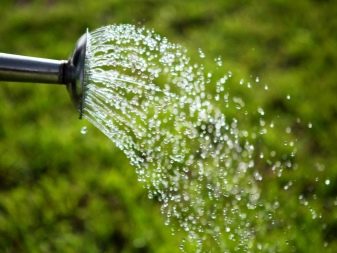

Reproduction
The need to propagate bird cherry arises very often. This procedure is usually done in the form of a graft in the winter or early spring. If we are talking about budding, then it is advisable to wait until the middle of summer. When copulating and budding, the efficiency reaches at least 95%. The plant is often propagated by cuttings.
Green cuttings work best. They are usually harvested after the end of shoot growth. Instead of water for soaking, you can use a developmental activator.
If, after grafting, the planting material is planted in an ordinary greenhouse, then you will have to water it 8 or 9 times a day. The alternative is the use of an expensive fog machine.
Seedlings usually appear on the principle of self-seeding directly under the crown. Among them, the strongest specimens are simply selected, which they use. The root shoots are suitable for the cultivation of the Virginia bird cherry, including its varietal types. In the spring, the material is cut from the root of the uterine bush. When rooting is complete in the fall, the most viable specimens are transplanted to the designated places.

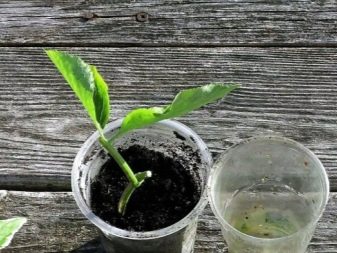
Diseases and pests
Alas, bird cherry is "loved" not only by people, but also by parasites and dangerous microorganisms. For the prevention of cytosporosis, plants are treated with a 1% solution of Bordeaux liquid. In the first third of spring, for the same purpose, the branches are treated with iron vitriol. Copper oxychloride can be used instead. In autumn, the bird cherry is whitewashed.
If the plant is affected by rot, then at first you can clean everything to healthy tissues and disinfect the plant. However, in advanced cases, it remains only to burn it. For this species, "pockets" of fruits and flowers are extremely dangerous. Everything that is infected must be destroyed, leaving only the obviously healthy parts. After the onset of flowering, again, Bordeaux liquid or iron vitriol is used.
Powdery mildew control measures are the same as for other crops... The Topaz reagent, which is used strictly in accordance with the instructions, will help to suppress cercospora. Coniothyroidism is suppressed with any suitable fungicide. Among insects parasitizing bird cherry:
- aphid;
- mining mole;
- unpaired silkworm;
- weevil beetle;
- hawthorn.
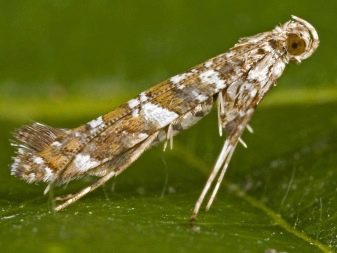
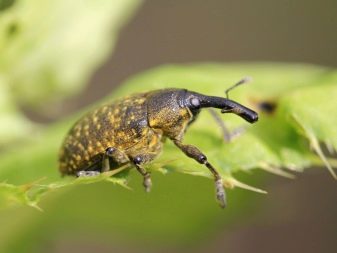
Application in landscape design
- Since ancient times, bird cherry trees and shrubs have been an attribute of almost any garden in Russia.... Today they are appreciated mainly by lovers of natural beauty, but fanciful compositions based on this plant cannot be created in any way. It looks pretty good near houses. Bird cherry is often planted in plots set aside for secluded leisure. With this culture, you can still mask any bad looking spot on the site.
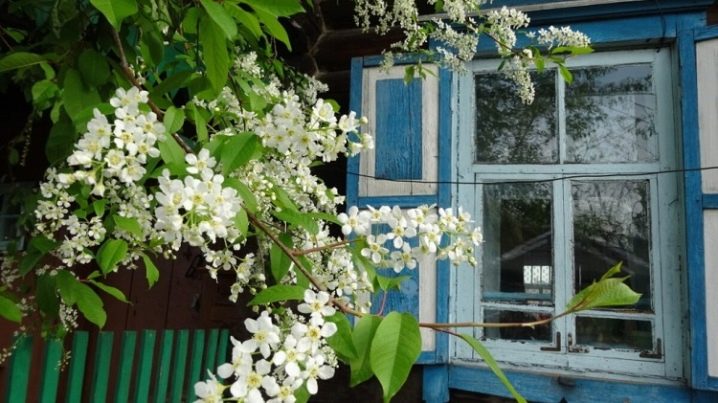
- In open areas, a tall graceful crown will look perfect. This will work especially well if nothing interferes with the view. Openwork bird cherry groups can also be suitable for the formation of alleys. In mixed groups, this culture is also perceived well.
But we must remember that over time, the bird cherry will grow strongly and begin to cast a thick shadow - that is, you will have to choose plants that are not afraid of such conditions.
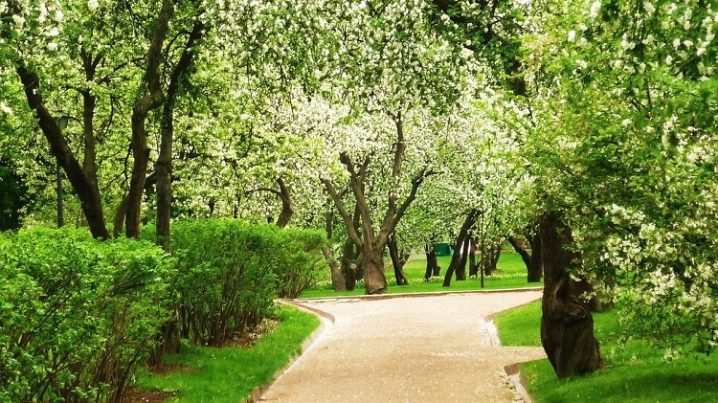
- Decent companions are decorative deciduous crops, characterized by spectacular colors... You can also focus on plants with a non-standard leaf shape. Virginia bird cherry perfectly forms hedges. Together with her, they plant any ornamental plants that bloom at the junction of spring and summer. In alleys and park areas, this species will show itself no worse.
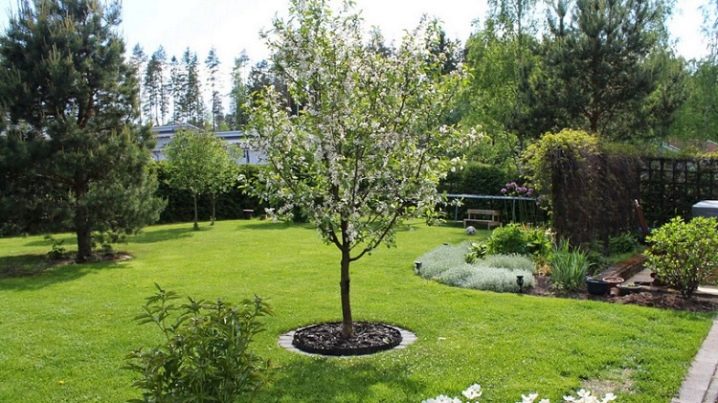









The comment was sent successfully.